Last updated on February 10th, 2024 at 10:13 pm
Expensive fabric refers to textiles or materials considered high value or luxury due to their rarity, quality, or exclusivity. The cost of these fabrics can be increased due to various factors, including the cost of production, the rarity of the materials used, and the exclusivity of the product.
Expensive fabrics can include natural fibers such as cashmere, silk, vicuña wool, and rare materials like Burmese lotus flower silk or spider silk. Fabrics incorporating precious metals like gold or platinum thread can also be expensive.
In addition to the materials’ cost, expensive fabrics often require specialized and labor-intensive production methods, which can further increase their cost. For example, the collection and processing of vicuña wool require special care and attention to ensure that the fibers remain soft and intact. At the same time, the production of Burmese lotus flower silk involves a complex and time-consuming process of manually extracting and spinning the fibers.
Different types of expensive fabrics may exist worldwide, but the stated ten are the most popular:
- Leopard Fur
- Vicuña Wool
- Shahtoosh
- Burmese Lotus Flower Silk
- Spider Silk
- Mulberry Silk
- Wild Silk
- Guanaco Wool
- Baby Cashmere
- Dhaka Muslin
Leopard Fur
Leopard fur typically refers to the distinctive spotted coat of the leopard, a large cat native to Africa and Asia. Leopard fur is highly valued for its luxurious texture and striking appearance and has been used for centuries in creating clothing, accessories, and home decor items.
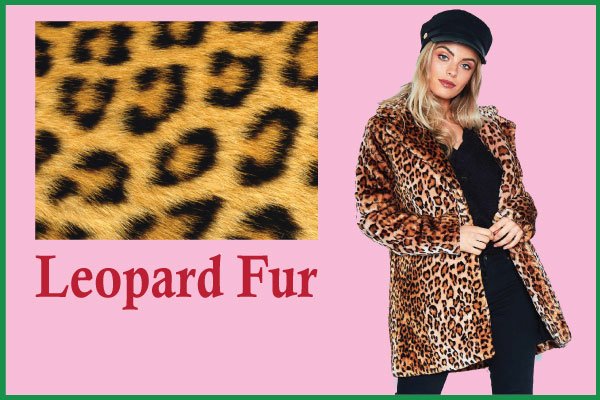
However, it is essential to state that real leopard fur is controversial and banned in many countries due to animal welfare and conservation concerns. There has been a growing trend towards using faux leopard fur as a more ethical and sustainable alternative in recent years.
Suppose you are interested in purchasing leopard fur products. In that case, it is essential to do your research to ensure that they are sourced ethically and legally and consider more sustainable alternatives such as faux fur or recycled materials.
Vicuña Wool
Vicuña wool is a rare and luxurious fiber from the vicuña, a small wild South American camelid. The fiber is highly prized for its softness, warmth, and durability and has been used for centuries to make high-end clothing and textiles.
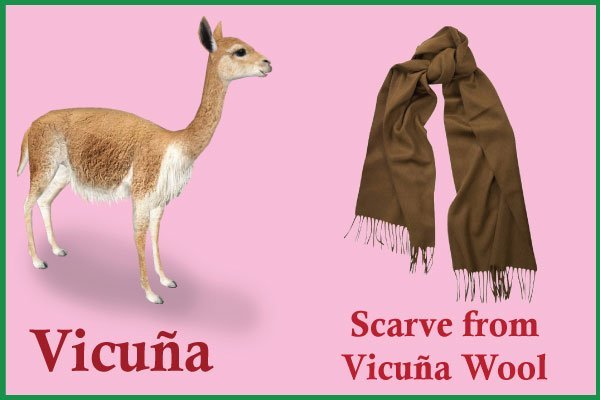
The vicuña is a protected species in many countries, and harvesting its wool is highly regulated. The wool can only be obtained by shearing wild vicuñas, which are caught and gently held while their wool is clipped. This process is done only once every three years to allow the animal’s coat to grow back fully.
Due to the rarity and high demand for vicuña wool, it is one of the most expensive fibers in the world. It is often used to produce luxury clothing such as scarves, shawls, and suits. In addition to its softness and warmth, vicuña wool is also known for its natural resistance to water, making it an ideal material for outdoor clothing.
Shahtoosh
Shahtoosh is a type of wool that comes from the undercoat of the Tibetan antelope, also known as the chiru. The yarn is excellent, soft, and prized for its warmth and luxurious feel.
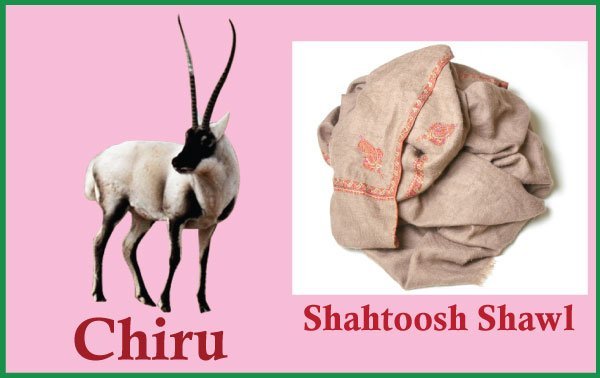
Unfortunately, the production of shahtoosh is highly illegal and unethical. The chiru is a protected species, and hunting and killing for the sake of its wool is unlawful. However, there is a black market for shahtoosh, and some people are willing to pay exorbitant prices for its products.
In addition to being illegal, the production of shahtoosh is also fierce. The chiru is often hunted in large numbers, and its wool is obtained through a process known as “live shearing,” which involves removing the wool from the animal while it is still alive. This process can cause significant pain and distress to the animal, and many chirus die.
Because of these issues, the sale and possession of shahtoosh is banned in many countries. Anyone who is found to be in control of shahtoosh products can face significant legal penalties. As a result, it is essential to avoid purchasing or using shahtoosh products to protect the chiru and prevent further harm to these endangered animals.
Burmese Lotus Flower Silk
Burmese lotus flower silk, also known as lotus silk or lotus fiber, is a rare and luxurious textile made from the fibers found inside the stem of the lotus plant. The lotus plant is native to Southeast Asia, and the fibers used to make lotus silk are harvested from the branches of the plant after the lotus flowers have been removed.
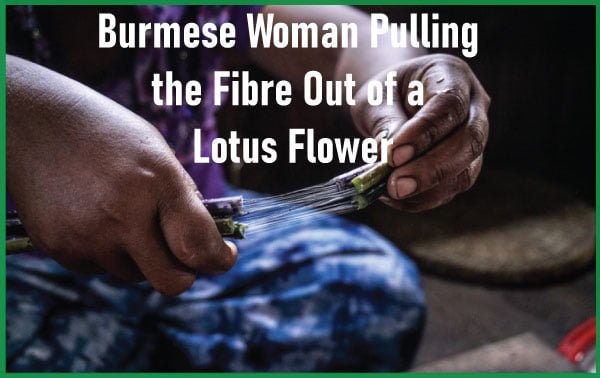
The fibers are hand-extracted from the stem of the lotus plant, then spun into threads and woven into fabric. The resulting textile is incredibly soft, lightweight, and has a shimmering, silky appearance. Lotus silk is also known for its durability and water resistance, making it a popular material for use in high-end fashion.
One of the most notable aspects of lotus silk production is that it is entirely sustainable and eco-friendly. No part of the lotus plant is wasted, as the flowers and seeds are used for food, while the stems are used to produce the fibers for lotus silk. Additionally, lotus plants grow naturally and require no chemical fertilizers or pesticides, making them a low-impact crop.
Because of its rarity and the time-consuming process required to produce it, lotus silk is one of the most expensive textiles in the world. However, it is also highly coveted for its unique beauty and eco-friendly production methods.
Spider Silk
Spider silk is a solid and flexible fiber that spiders produce. It is renowned for its strength and elasticity and has a higher tensile strength than steel of the same diameter.

Spider silk is produced by special glands located in the spider’s abdomen. These glands produce a liquid protein that is spun into silk threads through tiny spigots on the spider’s spinnerets. Different species of spiders have different types of silk, each with its unique properties and functions.
Due to its strength and flexibility, spider silk has many potential medical, engineering, and fashion applications. For example, it could be used to create biodegradable sutures for surgery, as well as lightweight and robust materials for use in space exploration or protective gear. In the fashion industry, spider silk is seen as a potentially sustainable alternative to traditional silk, often produced using unethical practices.
However, despite its potential uses, the commercial production of spider silk remains a challenge. Spiders are difficult to farm and have a low yield of silk production. It is currently more feasible to produce spider silk using genetically engineered bacteria or transgenic goats that produce spider silk proteins in their milk. Research is ongoing in this area, and the potential uses of spider silk continue to be explored.
Mulberry Silk
Mulberry silk is a type of silk produced by silkworms that feed on the leaves of the mulberry tree. It is the most common type of silk used for commercial purposes, known for its softness, lustre, and durability.
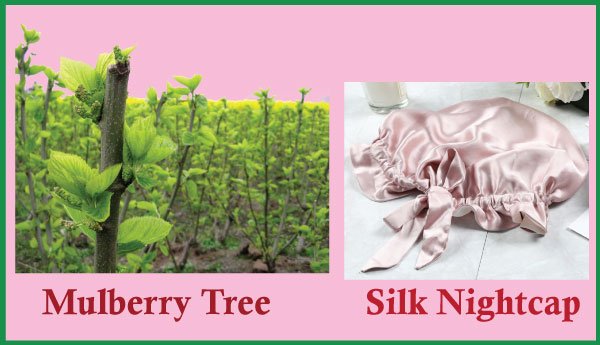
Producing mulberry silk begins with mulberry trees, which are grown specifically to feed silkworms. The silkworms are then raised in a controlled environment, fed the mulberry leaves and allowed to spin their cocoons. The cocoons are harvested, and the silk fibers are carefully unwound and cleaned.
Mulberry silk is highly valued for its quality, as it has a smooth, even texture and a natural sheen. It is also known for its hypoallergenic properties, as it is less likely to cause skin irritation than other types of silk.
It is used in various products, including clothing, bedding, and upholstery. It also produces high-end fashion items such as scarves, ties, and dresses. The production of mulberry silk is a labor-intensive process, and as a result, it is often more expensive than other types of silk.
Overall, mulberry silk is a luxurious, high-quality material prized for its softness, durability, and natural beauty.
Wild Silk
Wild silk, also known as tussah silk, is produced by wild silk moths, as opposed to the domesticated silkworms used to produce mulberry silk. Wild silk is generally considered less uniform and refined than mulberry silk, but it has a unique beauty and texture that is highly valued in some cultures and industries.
The production of wild silk is typically less controlled than the production of mulberry silk. Wild silk moths are allowed to feed on various plants, which can result in variations in the color and texture of the silk they produce. Additionally, the process of harvesting and processing wild silk is often more labor-intensive than the production of mulberry silk.

Wild silk is used in various products, including clothing, home furnishings, and accessories. It is trendy in some areas of Asia, where it is valued for its natural beauty and texture. Wild silk is also sometimes used in high-end fashion, where its unique character and irregularities can be incorporated into the design of garments and accessories.
Wild silk is a fascinating and unique material that offers an alternative to the more refined and uniform mulberry silk. It’s natural variations and amazing texture make it a popular choice for those who appreciate the beauty of raw materials. However, the production of wild silk is often more labor-intensive and less efficient than the production of mulberry silk, which can make it more expensive and less widely available.
Guanaco Wool
Guanaco wool is a natural fiber collected from the undercoat of the guanaco, a South American animal correlated to the camel. Guanacos are native to the Andes region of South America and can be found in Peru, Chile, Argentina, and Bolivia.
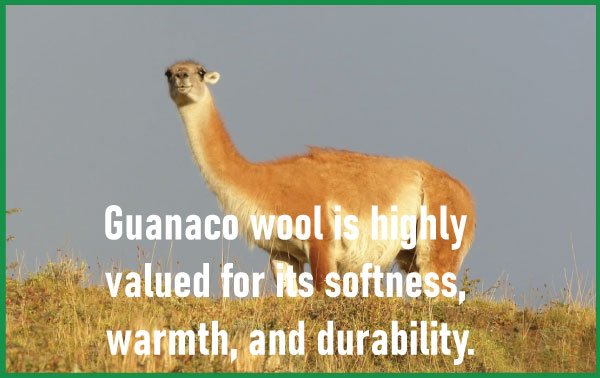
Guanaco wool is highly valued for its softness, warmth, and durability. It is similar in quality to other luxury fibers such as cashmere and alpaca, but it is much rarer and more difficult to obtain. Guanaco wool is also hypoallergenic, making it a good choice for sensitive skin.
The process of obtaining guanaco wool is time-consuming and labor-intensive. The wool is collected from the undercoat of the guanaco by shearing or combing. Because guanacos are wild animals, the wool must be collected from the animals as they roam freely in their natural habitats. This makes obtaining guanaco wool more difficult and expensive than other types of wool.
Guanaco wool is used in various luxury products, including clothing, blankets, and accessories. It is trendy in high-end fashion, where its softness and natural beauty can be showcased in unique and elegant designs.
Baby Cashmere
Baby cashmere is a rare and highly prized type of wool collected from the underbelly of Hircus goat kids. These goats are only found in the high-altitude regions of Mongolia and China, where they are raised in small herds by nomadic communities.

The term “baby cashmere” refers to the fact that the wool is collected from the kids before they are six months old when their undercoat is at its softest and finest. It makes baby cashmere wool exceptionally soft, lightweight, and warm, with a luxurious feel prized by those who appreciate the finest natural fibers.
The production of baby cashmere is highly regulated, with strict standards to ensure that the wool is collected humanely and sustainably. The goats are never harmed while collecting the wool, and only a small amount of wool is collected from each animal to ensure that they are not stressed or uncomfortable.
Baby cashmere is used in various luxury products, including clothing, accessories, and home furnishings. Its softness and warmth make it a popular choice for winter clothing such as sweaters, scarves, and hats, while its natural beauty and durability make it ideal for use in high-end fashion and home décor.
Dhaka Muslin
Dhaka Muslin, also known as Dhakai Muslin or simply Muslin, is a lightweight cotton fabric with a refined weave that originated in the region of Dhaka, which is now part of Bangladesh. It is known for its soft texture, delicate appearance, and intricate designs.
Muslin has a long and rich history, dating back to ancient times when it was highly valued for its quality and versatility. In the 18th and 19th centuries, it became one of the essential textiles traded worldwide and was particularly popular in Europe for its use in high-fashion clothing.

The production of Dhaka Muslin is highly skilled and labour-intensive, using hand-spun cotton yarns and intricate weaving techniques. Although the industry declined in the 20th century, efforts have been made recently to revive the traditional methods and preserve this important cultural heritage.
Dhaka Muslin is still produced in small quantities by skilled artisans and is prized for its beauty and cultural significance. It is used for various applications, including clothing, home textiles, and decorative items.
Fabrics woven with precious metals like gold or platinum thread are also unique due to the high cost of the materials. These fabrics are often used in luxury fashion and home decor products and can command very high prices due to their rarity and exclusivity. Similarly, fabrics made from rare and exotic materials like meteorite fragments or diamonds are also precious due to their scarcity and unique properties.
You may also like: The 10 Best Raised Surface Fabrics

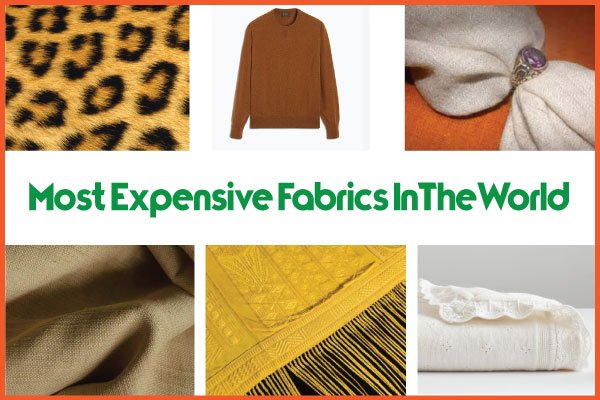





This blog is a reminder that positivity can be found everywhere. Bravo!
Nice post
I saw a lot of website but I conceive this one has something extra in it.